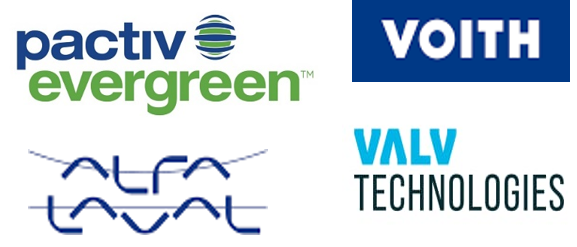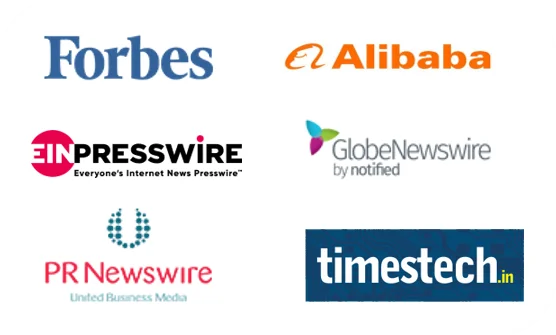Market Overview:
"The global LNG liquefaction equipment market was valued at US$ 878.7 Million in 2024 and is expected to register a CAGR of 4.8% over the forecast period and reach US$ 1,339.9 Million in 2033."
|
Report Attributes |
Details |
|
Base Year |
2024 |
|
Forecast Years |
2025-2033 |
|
Historical Years |
2021-2024 |
|
LNG Liquefication Equipment Market Growth Rate (2025-2033) |
4.8% |
Liquefied Natural Gas (LNG) liquefaction equipment plays a crucial role in the natural gas industry. The primary function is to convert natural gas into its liquid form, enabling efficient storage and transportation. This process involves cooling natural gas to extremely low temperatures, typically around -160°C, which results in its condensation into a liquid state.
LNG liquefaction equipment is essential as it significantly reduces the volume of natural gas, making it more cost-effective and practical for long-distance shipping. It is used in LNG production facilities and terminals worldwide, allowing natural gas to be transported via specialized vessels to regions without direct access to gas reserves.
Increasing demand for natural gas, especially in countries seeking cleaner energy alternatives and in regions lacking indigenous gas resources, is a key factor driving LNG liquefaction equipment demand. Also, factors such as environmental regulations, energy security, and shift towards cleaner fuels are contributing significantly to preference for LNG as an energy source.
Robust revenue growth of the global LNG liquefaction equipment market is driven by increased LNG consumption and rising demand for cleaner energy sources. Advancements in liquefaction technology and infrastructure development initiatives are also driving market revenue growth.
Compliance with environmental regulations and stringent safety standards is crucial for market players. Comprehensive analysis and insights into LNG liquefication equipment market trends and dynamics are essential for businesses to capitalize on emerging opportunities and make informed decisions in this rapidly evolving sector.
LNG Liquefication Equipment Market Trends and Drivers:
Increasing LNG Consumption: Rising demand for natural gas as a cleaner energy source, particularly in power generation and transportation sectors, is driving growth of the LNG market. This, in turn, drives demand for LNG liquefaction equipment, and supports revenue growth of the market.
Infrastructure Development: The establishment of new LNG liquefaction terminals and expansion of existing facilities worldwide are driving market growth. Infrastructure development initiatives aim to enhance the supply chain and meet rising demand for LNG across various regions.
Technological Advancements: Continuous advancements in liquefaction technology, such as more efficient processes, improved equipment designs, and enhanced operational capabilities, are boosting growth of the market. These advancements help increase the production capacity and efficiency of LNG liquefaction plants.
Environmental Sustainability: The transition towards cleaner fuels and compliance with environmental regulations are driving steady demand for LNG as an alternative to traditional fossil fuels. LNG offers lower greenhouse gas emissions, making it an attractive choice for countries and industries focused on reducing carbon footprint.
Growing International Trade: LNG liquefaction equipment enables the efficient transportation of LNG across long distances, facilitating international trade. Increasing inter-regional and cross-border LNG transactions are also contributing to revenue growth.
LNG Liquefication Equipment Market Restraining Factors:
High Capital Costs: The installation and operation of LNG liquefaction facilities entail significant upfront investments. The high capital costs associated with setting up liquefaction plants and related infrastructure can deter deployment, especially for smaller players and in emerging markets.
Price Volatility: LNG prices are subject to market fluctuations, influenced by factors such as supply-demand dynamics, geopolitical tensions, and global economic conditions. Price volatility can affect project economics, investment decisions, and overall market revenue growth.
Infrastructure Limitations: The development of LNG liquefaction infrastructure requires substantial investments in terminals, pipelines, and storage facilities. Insufficient or inadequate infrastructure can restrict the growth of the market, particularly in regions with limited access to LNG distribution networks.
Regulatory and Permitting Challenges: The LNG industry is subject to complex regulatory frameworks and permitting processes, varying across different countries and regions. Delays or difficulties in obtaining permits and regulatory approvals can hinder project development and impact revenue growth.
Competition from Other Energy Sources: While LNG is considered a cleaner alternative to traditional fossil fuels, it faces competition from renewable energy sources such as wind and solar power. Increasing adoption of renewables and their declining costs can pose challenges to growth of the LNG liquefaction equipment market.
LNG Liquefication Equipment Market Opportunities:
Expansion of LNG Infrastructure: Increasing demand for LNG necessitates the expansion and development of LNG liquefaction terminals and associated infrastructure. Companies involved in equipment manufacturing, construction, and engineering services can capitalize on this opportunity by providing solutions for new facilities and retrofitting existing ones.
Technological Innovations: Continuous advancements in LNG liquefaction technology present opportunities for companies to develop and offer innovative equipment and systems. This includes improved liquefaction processes, modular and scalable solutions, and advancements in efficiency and safety measures.
Retrofitting and Upgrading Existing Facilities: Many legacy LNG liquefaction plants that were installed decades ago may require upgrades or retrofits to enhance efficiency, capacity, and environmental performance. Companies specializing in equipment upgrades, optimization services, and technology integration can tap into this market segment.
LNG as a Marine Fuel: The maritime industry is increasingly adopting LNG as a cleaner fuel option to comply with stricter emissions regulations. Companies in LNG liquefaction equipment manufacture and provision can explore opportunities in providing bunkering infrastructure, small-scale liquefaction units, and LNG fueling systems for ships.
Emerging LNG Markets: As LNG gains prominence globally, emerging markets with growing energy needs offer significant opportunities. Companies can target these markets by providing turnkey solutions, offering equipment leasing or rental services, and establishing partnerships with local entities to facilitate market entry.
LNG Liquefication Equipment Market Segmentation:
By Equipment Type:
- Liquefaction Units
- Heat Exchangers
- Compressors
- Storage Tanks
- Pumps
- Others
By Capacity:
- Small-Scale (<0.5 MTPA)
- Mid-Scale (0.5-2 MTPA)
- Large-Scale (>2 MTPA)
By Process Cycle:
- Cascade Process
- Mixed Refrigerant Process
- Shell-And-Tube Process
- Others
By Technology:
- Conventional LNG Liquefaction
- Floating LNG Liquefaction
- Modular LNG Liquefaction
By End-Use Industry:
- Power Generation
- Transportation
- Industrial
- Residential & Commercial
By Application:
- Export/Import Terminals
- Bunkering Facilities
- Peak Shaving Plants
- Distributed LNG Production Units
LNG Liquefication Equipment Market, By Region:
North America:
- United States
- Canada
Europe:
- Germany
- The U.K.
- France
- Spain
- Italy
- Russia
- Poland
- BENELUX
- NORDIC
- Rest of Europe
Asia Pacific:
- China
- Japan
- India
- South Korea
- ASEAN
- Australia & New Zealand
- Rest of Asia Pacific
Latin America:
- Brazil
- Mexico
- Argentina
Middle East & Africa:
- Saudi Arabia
- South Africa
- United Arab Emirates
- Israel
North America market dominates other regional markets in terms of market share, led by major revenue contribution from the United States owing to surge in LNG liquefaction equipment demand. The shale gas revolution, government support, and the development of export terminals have added support to market growth. Increasing market share, revenue growth, and consumer preference reflect the potential for further growth of the market in the region.
Norway, the Netherlands, and the United Kingdom are registering robust demand for LNG liquefaction equipment currently. Market share and revenue growth are driven by commitment to reducing emissions in countries in the region, increasing LNG imports, and supporting infrastructure development initiatives.
Countries such as Australia, Qatar, and Indonesia are major regions in the LNG liquefaction equipment market in Asia Pacific. Robust revenue growth, market share expansion, and consumer preference stem from the region's increasing LNG consumption, energy diversification efforts, and government initiatives promoting LNG as a cleaner fuel.
Qatar and the United Arab Emirates are registering significant incline in demand. The LNG liquefaction equipment market share and revenue growth are driven by the region's abundant natural gas reserves, focus on LNG exports, and investment in infrastructure. Consumer preference for LNG as an energy source also supports market growth.
Leading Companies in LNG liquefaction Equipment Market & Competitive Landscape:
The landscape of the global LNG liquefaction equipment market is characterized by presence of several key players, including equipment manufacturers, engineering firms, and service providers, thereby making the market highly competitive. Companies such as Air Products and Chemicals, Inc., Linde plc, TechnipFMC plc, and Siemens Energy AG compete for market share, offering a range of technologies, equipment, and services to meet the growing demand for LNG liquefaction infrastructure worldwide.
Company List:
- Air Products and Chemicals, Inc.
- Linde plc
- TechnipFMC plc
- Siemens Energy AG
- Chart Industries, Inc.
- Mitsubishi Heavy Industries, Ltd.
- General Electric Company
- Bechtel Corporation
- McDermott International, Inc.
- Baker Hughes Company
- Chiyoda Corporation
- Saipem S.p.A.
- JGC Corporation
- Samsung Engineering Co., Ltd.
- KBR, Inc.
Research Scope
|
Report Metric |
Report Details |
|
LNG Liquefication Equipment Market size available for the years |
2021-2033 |
|
Base Year |
2024 |
|
Forecast Period |
2025-2033 |
|
Compound Annual Growth Rate (CAGR) |
4.8% |
|
Segment Covered |
By Equipment Type, Capacity, Process Cycle, Technology, End-Use Industry, Application, Component, Service, Deployment, Contract Type, and Region |
|
Regions Covered |
North America: The U.S. & Canada Latin America: Brazil, Mexico, Argentina, & Rest of Latin America Asia Pacific: China, India, Japan, Australia & New Zealand, ASEAN, & Rest of Asia Pacific Europe: Germany, The U.K., France, Spain, Italy, Russia, Poland, BENELUX, NORDIC, & Rest of Europe The Middle East & Africa: Saudi Arabia, United Arab Emirates, South Africa, Egypt, Israel, and Rest of MEA |
|
Fastest Growing Country in Europe |
Germany |
|
Largest Market |
North America |
|
Key Players |
Air Products and Chemicals Inc, Linde plc, TechnipFMC plc, Siemens Energy AG, Chart Industries Inc, Mitsubishi Heavy Industries Ltd, General Electric Company, Bechtel Corporation, McDermott International Inc, Baker Hughes Company, Chiyoda Corporation, Saipem S. JGC Corporation, Samsung Engineering Co Ltd, KBR, Inc and among others. |
Frequently Asked Question
What are some key factors driving revenue growth of the global LNG liquefaction equipment market?
The key factors driving market growth include increasing LNG consumption, infrastructure development, technological advancements, environmental sustainability initiatives, and growing international trade.
What are some major challenges faced by companies in the LNG liquefaction equipment market?
Companies in the market face challenges such as high capital costs, price volatility, infrastructure limitations, regulatory and permitting hurdles, and competition from other energy sources.
Which regions/countries are witnessing significant demand for LNG liquefaction equipment?
Regions such as North America, Europe, Asia Pacific, and the Middle East, along with countries like the United States, Qatar, Australia, and China, are experiencing substantial demand due to infrastructure development, government initiatives, and increasing consumer preference for LNG.
What are some emerging opportunities for companies in the LNG Liquefaction Equipment Market?
Companies can explore opportunities in infrastructure expansion, technological innovations, retrofitting/upgrading existing facilities, LNG as a marine fuel, and entering emerging markets with growing energy needs.
How is the competitive landscape in the global LNG liquefaction equipment market?
The market is competitive, with key players such as Air Products and Chemicals, Linde, TechnipFMC, Siemens Energy, Chart Industries, Mitsubishi Heavy Industries, and others competing for market share by offering a range of technologies, equipment, and services.

